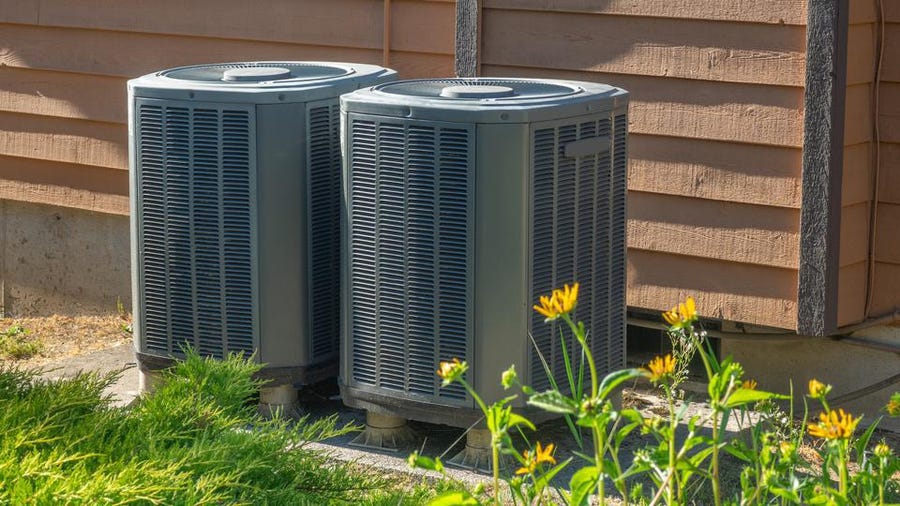Properly maintaining your HVAC system is essential to ensure the comfort of your home. As technology advances, it becomes increasingly important to understand the basics of HVAC systems. This article will provide an overview of the essential functions and components of a typical residential HVAC system so that you can make informed decisions about repair and maintenance.
Table of Contents
Heating Elements
Heating elements are integral to any heating, ventilation, and air conditioning (HVAC) system. They generate the heat that is used to warm a space. Depending on the type of HVAC system, the heating element can either be a furnace or an electric coil.
Furnaces use natural gas to power their heating elements. They have a burner that ignites a flame which then heats up tubes containing water or steam. This hot water is then circulated throughout the building through ducts or pipes and provides warmth in each room. The efficiency of these types of systems depends on proper maintenance and cleaning as well as correct sizing for the building they are installed.
Electric coils consist of metal wires or strips wound around ceramic cores which convert electrical energy into heat when energized with electricity from an AC power source. These are typically used for smaller spaces like apartments where natural gas may not be available due to cost/safety considerations and no ductwork exists for furnaces to circulate hot air throughout the residence. Electric coils provide quick warmth but tend to be more expensive than other types of HVAC systems due to their higher operating costs associated with electricity consumption over time. All Climate Mechanical takes any necessary precautions to ensure that your system doesn’t overheat and cause a fire such as installing a minimum of two separate thermostats per zone with heat anticipators.
Cooling Elements
Cooling elements are a key part of HVAC systems and how they work to cool a space. There are two primary types of cooling elements, mechanical and chemical. Mechanical cooling elements use refrigerants like Freon or ammonia-based gases that absorb heat and then release it outside the building. Chemical cooling elements use chemicals like lithium chloride or paraffin oil to cool liquid in an evaporative condenser, which then releases cooler air into the room. Both types of cooling elements rely on fans or blowers to circulate air across them so they can be cooled efficiently. Heat pumps can also be used as a form of mechanical cooling element and work by pulling existing heat from the outside environment rather than generating new cold air inside the building. Ultimately, choosing between these different types depends on individual needs in terms of energy efficiency, desired temperature range, cost, space availability and climate conditions.
Components & Mechanics
Components of HVAC systems vary by type and purpose, but they all include some combination of the same essential elements. A compressor is the heart of the system and compresses refrigerant before it is circulated through a condenser. The condenser then cools down the gas, turning it back into a liquid form. This liquid then passes through an expansion valve that reduces its pressure so that it can evaporate, cooling your home or business as it circulates through blowers and coils in your ductwork.
The mechanics of HVAC systems are complex yet fascinating. Heat is exchanged between two different environments with varying temperatures using air-cooled or water-cooled condensers to transfer heat from one area to another. Compressors then move the cooled air throughout your space via vents, or dampers when needed to control airflow levels for certain areas or rooms within your home or building. Finally, thermostats help maintain comfortable temperatures throughout by monitoring temperature levels and providing feedback about whether more heat or cooling is needed in any given area. If you have any problem with your HVAC you can contact AC Repair to solve your problem.
Air Quality & Technology
Modern HVAC systems play a major role in improving air quality. They work by heating and cooling the air in a room, as well as filtering particulates and other pollutants out of the air. As technology advances, so do HVAC systems. Advanced HVAC systems can use sensors to monitor and adjust airflow, temperature, and humidity levels for optimal indoor conditions. By using smart home technology such as voice-activated assistants or smartphones to control these settings, users can further customize their environment to make it more comfortable while also improving air quality.
Conclusion
HVAC systems are complex, but a basic understanding of the components and how they interact together can be beneficial. In conclusion, HVAC systems consist of several key components: a furnace, air conditioner, thermostat, air handler or blower motor, ductwork and vents. The furnace heats up the air by burning fuel while the air conditioner cools down the air. The thermostat allows you to control the temperature in your home; it senses when temperatures need to be adjusted and sends signals to turn on/off either the furnace or ac depending on what is needed for comfort. The air handler pushes heated or cooled air through ductwork that runs throughout your home. Finally, vents allow for this conditioned air to enter your living space so you can enjoy comfortable temperatures year round.

